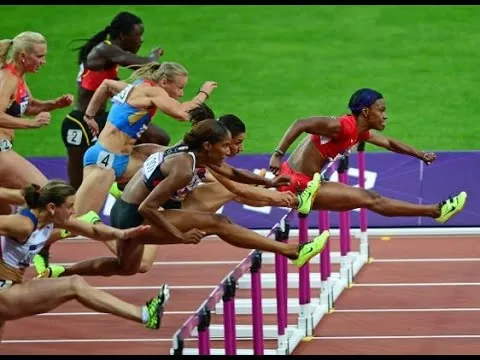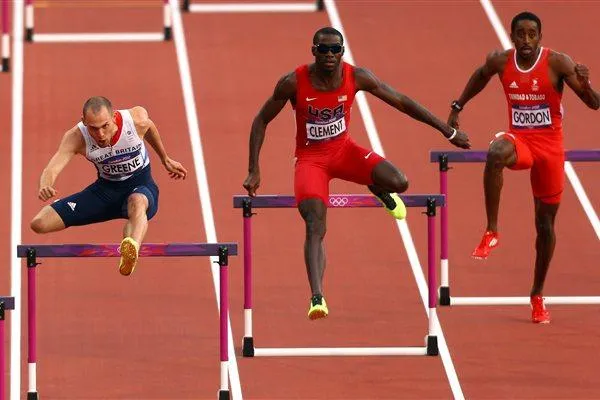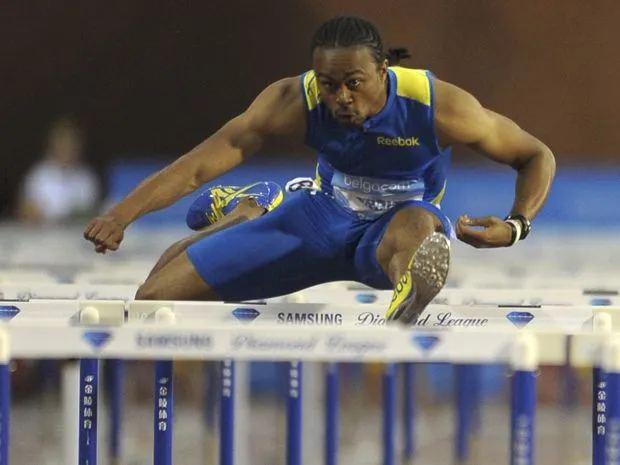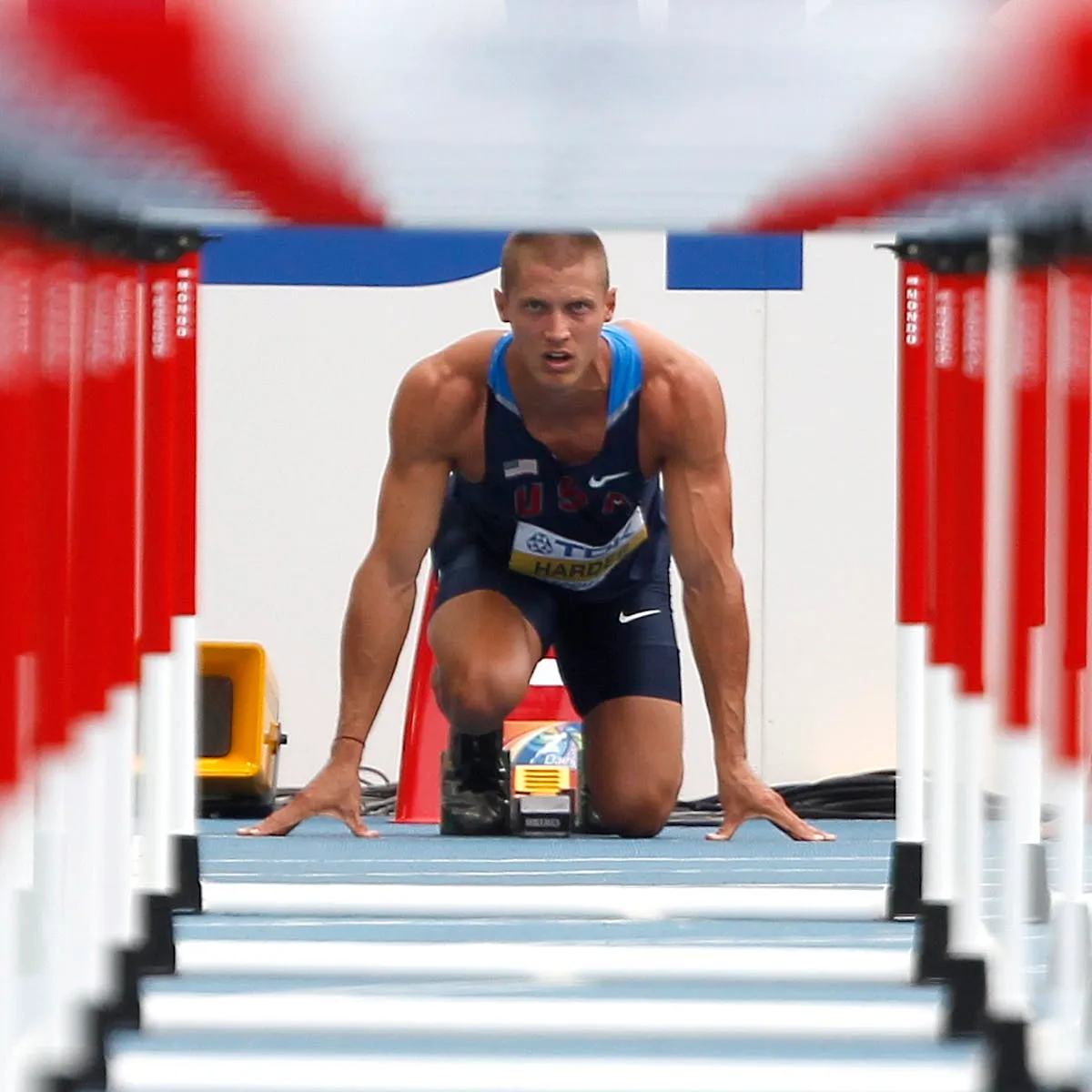Hurdles is a track event in which imposed barriers called “hurdles” are placed in each lane for the runners to clear. The runners pass over the hurdles, not jump over them. The process of slowing down to sprint over the hurdles always create rhythm. Hurdles could be 100m, 110m or 400m races.
Basic skills in Hurdles
Starting position: All hurdles races are sprint races and as such must start with a crouch. This means bending on the knees and leaning forward a little.
Approach to the first hurdle: The take-off point is usually between one and two metres from the position of the hurdle. One leg is nearly straight, brought forward while the other leg is at the back with the toes up. The approach run is the number of strides taken before getting to the first hurdle.

Clearing the hurdle: The hurdle is cleared by leaning forward and lifting the leading leg straight over the hurdle as the other leg pushes forward. Clear the hurdle, maintain balance and keep the body forward. Then turn the toes of the leading foot up to avoid hitting the bar. Mastering the number of steps in between hurdle and stride length is very important.
Landing: The runner comes down to the ground with full weight over the leading leg and in a position to run fast to the next hurdle. Eyes must be focused more on the next hurdle.
Strides between hurdles: a stride is the distance covered in one long step. Maintaining equal stride between hurdles is important. The athlete must run fast in-between the hurdles.

Finishing: When there are no more hurdles in your lane, you run to end the race. You must pass through the tape at the finishing line. Also, you must not break the rules that guide hurdles such as knocking down any of the cross-bar while running.

